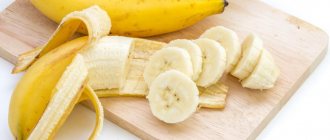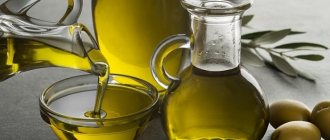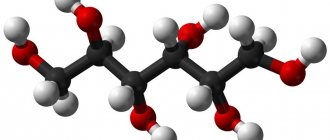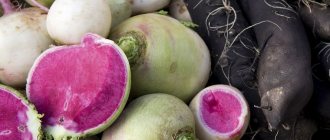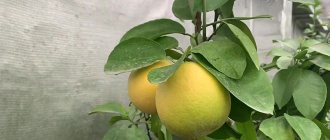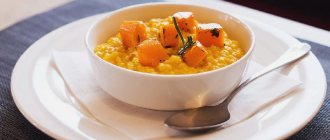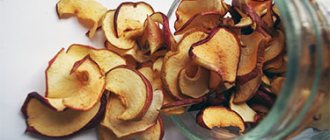History of bananas
Banana is the oldest cultivated crop in the world. The birthplace of the fruit is considered to be the Malay Archipelago, which includes the countries of Indonesia, Malaysia, Brunei, the Philippines and East Timor. Much evidence has been found that local people have been growing bananas for thousands of years.
- The fruit is mentioned in the Indian religious hymns of the Rig Veda (XVII – XI centuries BC) and in the ancient epics Ramayana and Mahabharata. They say that members of the royal family wore clothes made from fibers of banana leaves.
- The ancient Greek philosopher Theophrastus wrote the first book on botany in the 4th century BC, where he made a detailed description of the banana.
- The Chinese writer Yang Fu, who lived in 502-577 AD, in his “Encyclopedia of Curiosities” described the growth and cultivation of a seedless fruit similar to a crescent.
- Bananas were first brought to Europe by Alexander the Great during his campaign in India and Asia in 327 BC. Due to the cold climate, the plant did not take root and remained exotic until the end of the 19th century.
In 1870, American sea captain Lorenzo Baker brought 160 bunches of bananas from Jamaica, and a fashion for the fruit began. In 1876, at an exhibition in honor of the 100th anniversary of American independence in Philadelphia, bananas were sold for 10 cents per banana, which was expensive for those times.
Why should I control my sugar intake?
The American Heart Association (AHA) urges people to reduce their sugar intake because there is ample evidence that too much sugar can cause the following health conditions:
- Obesity - Scientists from the Medical Research Council have found that consuming large amounts of sugar is associated with excess weight.
- High blood pressure – A diet high in fructose increases blood pressure in men, according to research reviewed at the 63rd American Heart Association.
- Heart disease - Scientists from Emory University School of Medicine and the US Centers for Disease Control and Prevention (CDC) have found that people who consume large amounts of sugar are more likely to develop cardiovascular disease.
- Type 2 diabetes - Research conducted at the University of California, San Francisco suggests that sugar consumption may be directly linked to type 2 diabetes.
High consumption of added sugar in food.
The US Centers for Disease Control and Prevention (CDC) reported that many Americans consume too many calories from added sugar. The report found that nearly 13% of adults' total calorie intake comes from sources such as sugar and high fructose corn syrup.
Consumers need information about the amount of added sugar.
Dr Asim Malhotra, a cardiologist, wrote in the BMJ (British Medical Journal) last month that dietary advice about added sugar is harmful to people's health. Dr Malhotra said: "This advice is not only a manipulation by the food industry for profit, but is also a risk factor for obesity and diet-related diseases in the first place."
Food labels in the US and Europe only tell us the total amount of sugar per serving and don't tell us anything about the amount of added sugar. Therefore, it is almost impossible for the consumer to determine the amount of added sugar in food and beverages.
Nutritional value and composition of banana
The benefit of bananas lies in their rich composition. Nature has created a fruit that not only satisfies hunger, but also replaces the vitamin and mineral complex from the pharmacy. Below are lists of useful substances in pulp per 100 grams.
Organic matter
- Saturated fatty acids – 0.2 g
- Polyunsaturated fatty acids – 0.2 g
- Organic acids – 0.5 g
- Ash – 1 g
- Water – 74 g
- Starch – 2 g
- Dietary fiber – 2 g
Vitamins
- A (retinol) – 20 mcg
- B1 (thiamine) – 0.05 mg
- B2 (riboflavin) – 0.07 mg
- B4 (choline) – 10 mg
- B5 (pantothenic acid) – 0.4 mg
- B6 (pyridoxine) – 0.5 mg
- B9 (folic acid) – 10 mcg
- C (ascorbic acid) – 10 mg
- E (tocopherol) – 0.5 mg
- K (phylloquinone) – 0.5 mg
- PP (niacin) – 0.7 mg
- Provitamin A (beta carotene) – 0.15 mg
Minerals and trace elements
- Fluoride (F) – 2.2 mcg
- Selenium (Se) – 1 mcg
- Manganese (Mn) – 0.27 mg
- Zinc (Zn) – 0.15 mg
- Iron (Fe) – 0.6 mg
- Phosphorus (P) – 28 mg
- Potassium (K) – 348 mg
- Sodium (Na) – 31 mg
- Magnesium (Mg) – 42 mg
- Calcium (Ca) – 8 mg
A banana weighing 200 grams contains 25% of the daily value of potassium. This trace element is responsible for the functioning of the cardiovascular system, regulates the secretion of the kidneys and liver and stops the development of atherosclerosis. It is also found in mushrooms and greens, but bananas are the most delicious source of useful trace elements.
How many vitamins are in a banana?
Banana pulp contains vitamins necessary for the normal functioning of the human body:
- vitamin C is a strong antioxidant that helps slow down the aging process of the skin and increase the body's resistance to various infectious diseases;
- B vitamins smooth out PMS symptoms and have a beneficial effect on the nervous system;
- Vitamin E prolongs the active activity of skin cells - it becomes elastic, firm and smooth;
- carotene will protect the body from cancer and cardiovascular diseases, and prevent premature aging of the body.
100 g of banana contains:
| Vitamins | Content in mg |
| 0,015 |
| 0,04-0,5 |
| 0,05-0,07 |
| 0,5-1 |
| 0,2 |
| 18 |
| 5,6-36 |
| 0,3 |
Calorie content of bananas
The authors of most weight loss diets limit fruit in the diet due to its high calorie content.
- 100 grams of bananas contain:
- Calories – 95 kcal
- Proteins – 1.5 g
- Fats – 0.2 g
- Carbohydrates – 22 g
Fact!
The calorie content of dried banana is 370 kcal per 100 grams.
Glycemic index of bananas
The glycemic index of a banana depends on its ripeness - the riper the fruit, the higher the index:
- 35 units – slightly green;
- 50 units – ripe;
- 65 units – fruit with dark spots and dots.
If you care about your figure, choose slightly underripe and not very sweet bananas as a snack. They are no less healthy than the bright yellow and fragrant ones, but contain less sugar and have a safe glycemic index.
How much sugar is in a banana
It is generally accepted that a banana contains a lot of starch, but this is not so - this fruit contains 7 times less starch than any potato variety. To calculate how much sugar is in a banana, you need to understand how starch becomes glucose.
Starch is a polysaccharide molecule made up of many glucose units and is the net energy reserve found in plants. During the digestion process, the pulp breaks down into pure sugar and dietary fiber.
On a note!
100 grams of banana contains 2 grams of starch, which turns into 12 grams of sugar. For comparison, a heaping tablespoon contains 25 grams of sugar.
Calorie content (nutrition value) 100 gr. banana chips
A priori, banana chips fried in oil cannot be lower in calories than fresh fruits - and so they are: their high calorie content makes this product unsuitable for a diet menu; they contain:
- proteins – 9–10 kcal;
- fats – 300–310 kcal;
- carbohydrates – 200–205 kcal.
So, we calculate how many calories are in 100 grams. banana chips? Receives 510–525 kcal . A small bag of such a product is comparable in calorie content to a full meal.
Banana chips are high in calories
Types of bananas
More than 500 varieties of bananas are cultivated in the world, most of them are not distributed outside the countries where they are grown. In our country, this is a sweet fruit that replaces dessert, and on an industrial scale, bananas are divided into several types.
- Ornamental - the plant is used to create a beautiful landscape; the flowers do not bear fruit and serve as decoration for yards.
- Technical - the fruit pulp is processed, cleaned and a mass of fiber is obtained. They are used to make threads, which become the basis for fabric production.
- Feed bananas contain a large amount of starch; their pulp is peeled, dried, ground into flour and used for baking.
- Fruits - these are the fruits we buy for food and use in desserts.
On a note!
Banana flour is gluten-free and rich in protein and fiber.
Types of bananas
Benefit
Bananas contain many useful and necessary substances for the body, have a fairly balanced composition and can be classified as a valuable food product. Their beneficial properties are due to the substances they contain. In general, we can say that the product is rich in carbohydrates (due to the high sugar content), micro and macroelements, vitamins, and amino acids. Low fat content, no cholesterol. The composition includes polysaccharides (pectin, inulin, etc.) and dietary fiber. High in antioxidants and potassium.
Let's consider the effect of some of the elements included in the composition on the human body.
- Potassium. It is an extremely important macronutrient necessary for the normal functioning of the cardiovascular system. Being a natural sodium antagonist, this trace element prevents fluid retention in the body, eliminates swelling, normalizes blood pressure and helps maintain water and electrolyte balance. Takes an active part in the work of muscles.
- Calcium. Necessary for building and maintaining the strength of bone tissue, takes part in the functioning of the cardiovascular system.
- Phosphorus. Needed for normal brain function, as well as for building bone tissue
- Iron. Required for normal hematopoiesis. Takes part in many redox processes occurring in the body.
- The role of proteins, fats, carbohydrates, vitamins and other components contained in the product cannot be overestimated. We won’t dwell on each one separately, but move on to consider the effect of this product on the body as a whole.
Positive effect on organs and systems
Let's figure out the benefits of bananas for the human body. These fruits have beneficial effects on the body as follows:
- They influence the central nervous system, normalizing the psycho-emotional sphere, improving memory and brain function. They improve mood thanks to the easily digestible sugars they contain, as well as serotonin and tryptophan. Makes it easier to quit smoking.
- Normalizes the functioning of the digestive tract. Helps restore intestinal microflora thanks to inulin. Eliminate dysbiosis. They have a positive effect on intestinal motility, eliminating constipation and diarrhea. Promotes the secretion of protective mucus by the wall of the stomach and duodenum (prevention of peptic ulcers).
- Improves the functioning of the cardiovascular system. They normalize heart rate thanks to the potassium contained in large quantities. Normalize blood pressure, promote the removal of excess fluid from the body and maintain water and electrolyte balance.
- They are a source of easily digestible carbohydrates, acting as an “energy drink.” They replenish energy deficiency in heavy physical labor workers, athletes, bodybuilders and people who have used therapeutic fasting.
- Normalizes hematopoiesis. They are one of the sources of iron replenishment in case of iron deficiency. They have a preventive and additional therapeutic effect for iron deficiency anemia.
- They are a source of antioxidants. Act as a good prophylactic agent for the prevention of cancer. Neutralizes the damaging effects of free radicals on body cells. Slow down the aging process and help prolong active longevity.
- Positively affect the health of women and men regarding their reproductive function. Helps normalize hormonal levels. Relieves premenstrual and postmenstrual syndrome in women. It alleviates the condition of pregnancy toxicosis, eliminating one of the unpleasant symptoms – nausea. They have a positive effect on male libido.
- They do not have allergenic properties. They are products that rarely cause food allergies. Can supplement the diet of children over 3 years of age (it is better to consult a doctor about taking it at an earlier age). Can be eaten by pregnant women.
Banana varieties
Most of us buy one type of banana, but large supermarkets sell several types. On your next trip to the store, pay attention to the selection and try different fruits.
Cavendish
A variety of bananas that is sold in every store. Fruits up to 25 centimeters long are picked unripe. To ensure ripeness, they are treated with a special gas, as a result they become yellow with green spots at the stalk. The most delicious ones are those with black dots, this is a sign of standard ripeness.
Baby
Small fruits 7-10 centimeters long are sold in clusters of 5-7 pieces. In composition they are not inferior to large ones, have a very thin peel and a delicious aroma. Their taste is much sweeter than regular bananas, and the flesh has a creamy texture.
On a note!
Baby bananas are 3 times more expensive than regular bananas.
Barro
Be sure to buy bananas of this variety to try. They are easily distinguished by the square shape of the fruit in cross-section. The color of the peel is yellow, the pulp has a fresh taste and aroma with notes of citrus. Banana chips and candied fruits, beloved by many, are made from the fruits of this variety.
Morado
Philippine bananas are easily identified by their red skin. They are picked unripe, but during transportation the fruits ripen completely. The pulp is very tender, creamy, sweet with a subtle tomato aroma.
Ice Cream
Large fruits 20-22 centimeters long when unripe have a bluish-silver skin. When bananas are fully ripe, the color turns light yellow. The pulp has an unusual taste - white, sweet, similar to ice cream.
Platano
Bananas do not contain fructose and are rich in starch; they are not eaten raw and are used to make soups and side dishes, like potatoes. The ripe fruit has a brown peel and pink flesh of a dense consistency.
Platano
Changes in sugar content
The sugar content of bananas changes as they ripen in a process controlled by a plant hormone known as ethylene. Green bananas are almost all starch and have low sugar content. As bananas ripen, the starch content decreases and sucrose appears. Then fructose and glucose appear. After approximately 28 days of ripening, sucrose begins to decline. The sugar content of overripe bananas can be significantly higher than that of bananas that are underripe and optimally ripe.
Bananas offer several health benefits, providing you with essential potassium, vitamin C, and vitamin A. They also contain fructose, a simple carbohydrate also called fruit sugar that occurs naturally in many fruits and vegetables, as well as honey. Like all carbohydrates, fructose provides four calories per gram, and bananas' fructose content makes them an easily digestible fruit.
Growing banana
Since childhood, we are accustomed to thinking that banana grows on palm trees, but in fact it is a grass. The peculiarity of the plant is its size; the “blade of grass” grows up to 7-10 meters in height and has a thick trunk.
After the first year of growth, the trunk has 40-50 stems, on which white, pink or purple flowers bloom with nectar that attracts bees. Inflorescences grow in clusters according to gender characteristics - female, male and neuter separately.
When flowering ends, bunches of bananas are tied at the base. One pollinated flower produces 250-300 fruits! They are collected, hand-packed into boxes, labeled with the company name, and shipped all over the world. Bananas from Ecuador, China and India are especially popular in Ukraine.
How to grow a banana
If you plant a banana in open ground, in our climate the perennial herbaceous plant will freeze when the air temperature drops to 16°C. If you have a greenhouse or heated loggia, try growing bananas at home.
Growing Tips:
- choose seedlings of dwarf varieties: Musa Super Cavendish Dwarf or Musa Cavendish Dwarf, which grow no higher than 2 meters;
- Place the tub with a banana in the most illuminated place;
- regularly water the leaves and spray them with a spray bottle, the plant loves high air humidity;
- Apply fertilizer to the soil every 2 weeks and replant when roots emerge from the drainage holes.
On a note!
When the root system reaches a pot volume of 50 liters, the banana will begin to bear fruit.
What is fructose intolerance?
Fructose intolerance is a digestive pathology. It is caused by a congenital deficiency of the enzyme for its breakdown. In this case, it is recommended to exclude fructose and sucrose from the diet.
It is worth limiting foods rich in fructans - asparagus, onions, garlic, lentils, red beans, beets, wheat products (bread, pasta, flour). You should also avoid sweeteners, since they are all fructose derivatives. These substances are typically found in diet drinks, chewing gum, and candies labeled “sugar-free.”
Photo: unsplash.com/@marvelous
In addition, if you are intolerant to fructose, you should not use medications containing sorbitol and sugar as excipients.
Beneficial properties of bananas
Much has been written about the benefits and harms of bananas; most nutritionists and doctors advise consuming the fruit in moderation. The fruits are rich in vitamins and microelements, fiber and satisfy hunger well. This is a natural dessert with virtually no sugar, healthy for children and adults.
General benefit
- The tropical fruit is rich in potassium, which supports eye, kidney, liver and cardiovascular health. Eat 1-2 bananas daily to reduce the risk of atherosclerosis by 50%.
- Banana is rich in carbohydrates, which instantly saturate the brain with energy and activate its work. If you have a difficult exam ahead and need to concentrate and gain strength, eat a ripe banana.
- Scientists have found that the optimal combination of potassium and magnesium in the fruit pulp helps lower blood pressure and prevents the formation of stones in the kidneys and gall bladder.
- Magnesium in combination with vitamins C and B6 has a positive effect on the functioning of the heart muscle and reduces the risk of heart attack and other heart diseases by 2 times.
- Banana pulp is rich in fiber; it is recommended to eat the fruit for diarrhea and other disorders of the gastrointestinal tract. During a disorder in the gastrointestinal tract, potassium is washed out of the body, and the fruit restores the level of the microelement.
- Ripe fruits contain the maximum amount of insoluble dietary fiber, which, like a brush, cleanses the intestines of accumulated free radicals and prevents the development of colorectal cancer.
- Banana berries are rich in antacids. The substances neutralize bacteria that irritate the mucous membrane and prevent the occurrence of gastritis and stomach ulcers.
For men
- Bananas are recommended for all lovers of an active lifestyle. The pulp contains substances that relieve muscle tension and relieve soreness after exercise.
- High in carbohydrates and calories, you'll feel instantly energized after the gym. It is recommended to prepare protein shakes from cottage cheese and milk based on the fruit.
For women
- The sweet pulp contains amino acids that promote the production of dopamine, which improves mood. During PMS, it is recommended to eat 1 banana a day to avoid mood swings.
- A nursing mother's diet is often limited. When you can't eat most fruits, bananas come to the rescue. The fruits do not contain allergens and are recommended during lactation.
For children
- Bananas are the very first complementary food after breast milk. The fruit does not cause allergies, provides the baby’s body with useful substances and especially fiber, which normalizes stool. Scientists have found that children who eat 1 banana daily suffer from asthma 2 times less often.
- It is important to give cottage cheese to children from an early age for bone formation. The carbohydrates in bananas promote the absorption of calcium from dairy and fermented milk products. Children do not need to be forced to eat bananas; the sweet fruit is a favorite dessert.
Fact!
Banana is the only product in the world that contains natural serotonin - the “happiness hormone”.
How to eat the fruit for diabetics
If a person is diagnosed with this disease, then in this case a fruit such as a banana should be consumed with extreme caution and follow some simple tips:
- It is not recommended to consume the whole fruit at once. The safer and healthier option is when people with diabetes eat this product, divided into several parts throughout the whole day.
- You should not eat unripe fruits of this fruit. This is due to the fact that the unripe product contains large quantities of plant starches. In people who suffer from this disease, these substances will be excreted very poorly from the body.
- It is also worth discarding overripe fruits. Everything here is quite natural: since the sugar level in overripe bananas is an order of magnitude higher than in a regular ripe fruit. By consuming it, the patient's blood sugar level will rise even more.
The ideal option for diabetics is the fruit, prepared in the form of puree. Naturally, it can be eaten in its usual form, but it is preferable to consume this fruit in puree form. Before eating this fruit, you need to drink 1 glass of clean water. It is strictly forbidden to eat it in large pieces, and even more so it is not recommended to drink it with water.
It is strictly forbidden to eat it together with other products, especially flour products.
If a person wants to consume this product with other ingredients, then in this situation other starchy foods, among which kiwi, orange or apple, should be highlighted. This particular combination is recommended for people who have varicose veins. If the patient wants to use this product 100% for the benefit of his own body, then in this situation it is advisable to stew or bake it. If a person is a fan of cocktails, then you can prepare a tasty and healthy drink using a blender.
If you decide to bake these fruits, then first of all you need to prepare them correctly. You should not cook this fruit until a fried crust appears on it, as this is not preferable for people with diabetes of any type.
If a patient has been struggling with an insidious disease for many years, banana should not be avoided in the daily diet.
In moderation, it will be quite beneficial for the patient.
Harm of bananas
The high calorie content of bananas is the main contraindication for eating sweet fruits. Nutritionists recommend limiting fruit in your diet if your doctor has prescribed a low-carbohydrate diet. If you are obese, it is better to exclude bananas, making up for the lack of potassium with pharmaceutical complexes.
Contraindications
- Banana removes fluid from the body, causing the blood to thicken and the flow to the organs to decrease. People with varicose veins, men with potency problems and patients with thrombophlebitis are advised to limit fruit in their diet.
- Taking beta blockers in the treatment of cardiac diseases increases potassium levels in the body. You should not eat more than 1 banana per day, especially if you have diseases of the kidneys and genitourinary system.
- If you have irritable bowel syndrome, you must exclude fruits from your diet to avoid bloating.
- People with diabetes should choose unripe fruits with a low glycemic index or avoid bananas due to the complex carbohydrates they contain, which are converted into glucose.
Contraindications
Can you eat bananas if you have diabetes?
The fruit has an average glycemic index. Its performance depends on the degree of maturity. In green fruit it is equal to 30 units, in ripe fruit it can reach 60. Despite these characteristics, there is no categorical ban on the use of the product. Therefore, diabetics should not exclude bananas from their diet.
You need to adhere to one important rule - use them in limited quantities as prescribed by the doctor. Bananas for type 2 diabetes can be dangerous for humans.
Domestic specialists from the diabetic association advise introducing berries into the diet of patients in a special way.
How to select and store bananas
Bananas are collected unripe and transported at a temperature not exceeding 10°C so that they do not ripen on the road. That is why they are most often sold green in stores.
- If you want to eat bananas in 1-2 days, choose yellow fruits with black dots.
- To bring the fruit to ripeness, place it in a bag with apples, tie it and leave it overnight at room temperature. The ethylene released by fruits will make both apples and bananas ripen faster.
- Choose bananas with yellow skin without green spots on the stem; such fruits are sweeter and more aromatic.
- Do not store bananas in the refrigerator; at low temperatures, the peel will quickly turn black, but this will not affect the taste.
Advice!
When choosing bananas for baking or desserts, buy overripe fruits with small black spots, the sweetest ones with a soft center and a pronounced aroma. They are often sold at a 50% discount.
Is there starch in banana?
Depending on the state of banana ripeness, the proportion of starch in it is different:
- unripe, green bananas are rich in insoluble, resistant starch - this substance is not digested in the small intestine of a person, but undergoes a fermentation process in the large intestine, causing increased gas formation and rumbling in the stomach;
- In ripe bananas, starch is converted into sugar, which is why ripe bananas are sweeter than green ones and are easier for the digestion process.
Unripe bananas (with green skin) contain a lot of starch.
There are people who much prefer the bright herbal taste of unripe bananas - perhaps knowledge of the significant starch content in such fruits will help them create a more rational menu.
Use in cooking
We advise you to look in supermarkets for plantains rather than ordinary bananas. This is a vegetable variety that is used in many countries as our potatoes. The fruits are peeled, then boiled, stewed with meat, made into dough and prepared into a delicious dish - fried banana.
- In Polynesia, a popular dish is masi - canned plantains and breadfruit.
- In Venezuela, they prepare yo-yo - feed bananas are fried with soft sheep cheese.
- In India, boiled banana flowers are used in traditional curry paste.
- In Latin America, unsweetened chips are made from plantains.
- All over the world, bananas are added to smoothies, fruit salads and baking fillings.
- Frozen banana pulp is natural ice cream.
- Microwave bananas topped with banana topping - the easiest dessert in 3 minutes.
Advice!
For vegans and those fasting, it is recommended to replace eggs in baked goods with bananas. 1 medium-sized fruit = 1 chicken egg. Peel the fruit, mash thoroughly with a fork and use as indicated in the recipe.
The use of bananas in dietetics.
Many people ask whether it is possible to lose weight by eating bananas. Doctors recommend eating bananas, especially bananas, nutritionists advocate
advertising is not displayed
It doesn’t matter how many calories there are in a banana, the important thing is that it helps the body get rid of excess water, and, as a result, excess weight. Also, the low fat content adds to the banana's beauty. Nutritionists have even developed a banana diet
This is a great way to help you get rid of extra pounds. There are many different variations of this diet. Let's give an example of one of them
Nutritionists have even developed a banana diet. This is a great way to help you get rid of extra pounds. There are many different variations of this diet. Let's give an example of one of them.
This diet option will ensure a slow, gradual loss of extra pounds. Also, this diet cannot be classified as strict; on the contrary, you will find it the most delicious. Of course, the diet is not about eating only bananas. It's just based on simple rules in which you won't have to count how many calories are in a banana.
You need to eat up to two bananas just before you are about to eat. Not difficult, quite simple and easy to remember. Then, you can eat whatever you want. Of course, you must follow the rules of a balanced diet - this will significantly help your body get rid of excess, disturbing weight. And also, you can’t be so strict about eating only bananas before meals, because it can get boring. You can safely replace the banana with an apple. For example, for breakfast or lunch.
You should not expect quick results from such a diet; it should help your body prepare for more strict diets. If you want to quickly lose weight, then there is a diet for this called the “Banana Split”. It belongs to the so-called emergency diets. It is intended for those who want to lose a few kilograms in a minimum time and how many calories are in a banana should not be counted at all.
It is usually designed for a maximum of 3 days. The essence of this diet is as follows. You can only eat 3 bananas and drink 3 glasses of skim milk per day. Moreover, all this food must be divided into 5 meals throughout the day. You can also drink water if you are very thirsty or hungry. Water is allowed under any circumstances. The result promises to be this: 3 kilograms in 3 days.
Also, people with certain blood diseases should not overuse bananas. Since bananas remove fluid from the body well, frequent use of this product leads to blood thickening.
In conclusion, I would like to say, don’t guess how many calories are in a banana. Enjoy this healthy and tasty fruit, which will not harm your health in any way. By the way, it is worth saying that banana has a very good effect on the digestive system. And from the above it is clear that depending on the person, the product can bring both benefit and harm.
Bon appetit!
Application in medicine
Bananas are not used in the pharmaceutical industry, but their beneficial properties are used in folk medicine.
- An infusion of flowers helps with bronchitis and dry cough; it is an excellent expectorant.
- Fresh leaves in many tropical countries are used to treat wounds and abrasions, like our plantain.
- Dried banana roots are added to tea for dysentery and other gastrointestinal disorders.
Medicinal recipes
- For bronchitis, it is recommended to drink a honey-banana drink. Beat the pulp of three fruits in a blender with 500 ml of boiling water, let it brew for 30 minutes. Add 3 tablespoons of honey, drink ½ glass 4 times a day before meals for a week.
- A banana-kefir drink helps with constipation. Beat two ripe bananas with 300 ml of fresh kefir and add 2 tablespoons of oat bran. Drink in the morning on an empty stomach; it is recommended not to eat anything on the day of administration, so that fiber and kefir effectively cleanse the intestinal walls.
- To treat a dry cough, it is recommended to beat the pulp of a ripe banana with 100 ml of freshly squeezed orange juice, add ½ teaspoon of cinnamon and 150 ml of boiling water. Drink three times a day 20 minutes before meals for a week.
Advice!
Don't throw away banana peels! We recommend drying it in the oven, grinding it into powder and adding it to water for flowerpots when watering; this is a natural fertilizer.
Calorie content 100 gr. cottage cheese with banana (1 piece) without peel
Of course, not everyone can handle eating the same product in its pure form every day, and there’s no need to: among people there are both real banana eaters and those who are more than indifferent to these fruits. The banana menu can be diversified by adding cottage cheese casseroles, kefir, yogurt or regular cottage cheese - the calorie content is calculated as the sum of the kcal components of the products :
- banana with yogurt – 135 kcal;
- kefir with banana puree – 60 kcal;
- cottage cheese with banana – 190 kcal;
- but the cottage cheese and banana casserole will be much less high in calories - only 100-105 kcal.
Waffle with banana pieces and grain curd
Application in cosmetology
Many cosmetics concerns use banana as a raw material for the production of face, body and hair care products. It is easy to make masks and lotions at home.
Moisturizing mask with banana against acne
Mix ½ ripe banana with 1 tablespoon of unsweetened yogurt or sour cream, add 1 capsule of vitamin E and 1 teaspoon of bran. Mix, apply to face for 20 minutes, rinse with warm water and repeat 2 times a week.
Anti-wrinkle mask with banana peel
Using a spoon, carefully remove the pulp from the banana peel. Carefully break the chicken egg and separate the yolk. Mix in the pulp, stirring thoroughly with a fork. Apply to the neck and skin around the eyes, after 30 minutes, rinse with warm water.
Banana hair rinse
Mix 1 liter of warm water with ripe banana pieces and beat thoroughly with a blender. After shampooing, apply to hair, leave for 5 minutes and rinse.
Advice!
A banana mask helps with sunburn. Place the fruit in the freezer for 20 minutes, cool and beat with a blender or mash thoroughly with a fork. Apply to damaged areas of skin, leave for 30 minutes.
How much sugar is in one banana?
high-sugar foods and therefore cannot be recommended for a low-calorie diet:
- 100 bananas contain 12.23 g;
- ripe banana (1 piece) contains 12–16 g of sugar.
With proper nutrition, bananas, in turn, maintain optimal blood sugar levels, stopping attacks of uncontrolled hunger.
Each banana, depending on the variety and weight, contains two to two and a half teaspoons of sugar.
Interesting Facts
- The Gokusen banana variety was developed in the Philippines. It is grown 500 meters above sea level in the mountains and sells for $2 per fruit.
- In China, it is illegal to broadcast scenes of girls eating bananas on television.
- In British slang, “banana” is a nickname for a crazy person.
- In the 16th century, conquistadors considered fruits to be food for the plebeians and fed them to slaves.
- The term "banana equivalent" is used to measure the level of radioactivity. It is equal to the amount of radiation that a person will receive if he eats one fruit. The fruit contains potassium-40 isotopes equivalent to 0.05 microsievert. The lethal dose is 8 sieverts.
- In nature, there are bananas of amazing colors - blue, black and gold.
- For Ecuador, Costa Rica and Guatemala, banana exports are the main source of filling the state treasury.
Sweet nutrition of bananas
According to the USDA National Nutrient Database, one medium banana contains about 105 calories and about 14.3% total sugars. Sugar is a carbohydrate, supplying 4 calories per gram. This means that about 58 of those calories come from the sugar content alone. In other words, the average banana is about 55 percent sugar. Luckily, bananas contain natural sugars and contain a large amount of vitamins and nutrients that make them a healthy choice for most people.
